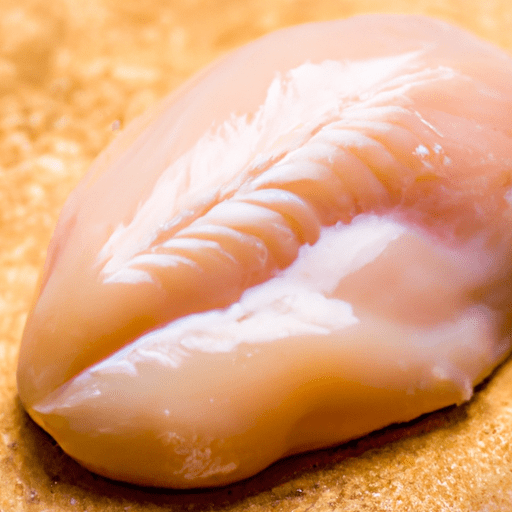The Versatile and Nutritious Chicken Breast Meat
When it comes to lean and tender meat, chicken breast often steals the show. Packed with flavor, easy to cook, and highly versatile, this exquisite cut of poultry has become a household favorite. In this blog post, we’ll delve into the world of chicken breast meat, exploring its taste, common uses in cooking, nutritional value, and uncovering some interesting history and facts.
Taste and Texture
Chicken breast meat, known for its delicate and mild flavor, offers a satisfying and tender texture. Its firm yet succulent flesh makes it highly sought after in the culinary world. The mild taste of chicken breast serves as an excellent canvas for a wide array of seasonings, sauces, and marinades, allowing for endless opportunities to create diverse and flavorsome dishes.
Common Uses in Cooking
From quick weeknight dinners to elaborate feasts, chicken breast propels itself as the go-to ingredient in many recipes. Its versatility enables it to take on different cooking methods while complementing an assortment of complementary ingredients. Here are a few popular uses of chicken breast in cooking:
Grilled or Pan-Seared: Grilling or pan-searing chicken breast yields a delicious caramelization on the outside while retaining its natural juiciness and tenderness within. This method is perfect for creating mouthwatering chicken sandwiches, wraps, or salads.
Baked or Roasted: Baking or roasting chicken breast allows for even cooking and an opportunity to infuse it with herbs, spices, or citrus. A golden-brown crust with juicy meat is achieved, ideal for serving as a standalone entrée or alongside vegetables.
Stir-Fried or Sauteed: Thinly sliced chicken breast cooks quickly when stir-fried or sautéed, making it a great choice for stir-fries, Asian-inspired dishes, or pasta accompaniments. Its mild flavor allows it to effortlessly absorb the flavors of the accompanying ingredients.
Chicken Soups and Stews: Diced or shredded chicken breast is a classic addition to nourishing soups and hearty stews, bringing a dose of protein and flavor to the dish.
Nutritional Value
Beyond its culinary appeal, chicken breast boasts an impressive nutritional profile. It is an excellent source of high-quality protein, essential for muscle growth and repair. Additionally, it is relatively low in fat and calories, making it a popular choice for those aiming to maintain a healthy diet. Chicken breast contains essential nutrients such as vitamin B6, niacin, phosphorus, and selenium, which contribute to overall health and well-being.
History and Interesting Facts
Chicken has been consumed for centuries, dating back to ancient times. The domestication of chickens is believed to have originated in Southeast Asia before spreading across continents. Interestingly, chicken breast meat has gained popularity more recently due to its versatility, ease of preparation, and its ability to appeal to a wide range of taste preferences.
In the United States, chicken breast became increasingly popular in the mid-20th century as part of a movement promoting leaner meats. Chefs and home cooks alike discovered its potential as a lean and healthy option without compromising flavor.
Chicken breast meat continues to be a staple in the culinary world for good reason. Its mild taste, tender texture, and endless cooking possibilities make it a must-have ingredient. Whether you’re grilling, roasting, stir-frying, or simmering it in a soup, this versatile cut adds a burst of flavor and nutritional value to any dish. Embrace the beauty of chicken breast meat and unlock the delicious potential it holds in your kitchen!
Chicken Breast Meat
Origin: Chicken breast meat comes from the breast of a chicken, which is a domesticated bird raised primarily for meat and egg production. Chickens are believed to have originated from the wild red junglefowl in South Asia.
Common Uses: Chicken breast meat is a versatile ingredient and is commonly used in various culinary preparations. It can be cooked by grilling, frying, baking, boiling, or roasting. It is often used in dishes such as chicken salads, stir-fries, kebabs, sandwiches, quesadillas, and pasta dishes.
Nutritional Benefits: Chicken breast meat is known for being a lean source of protein. It is also a good source of essential nutrients like vitamins B6 and B12, niacin, selenium, and phosphorus. It is generally low in fat compared to other cuts of chicken, making it a popular choice for those seeking a lean protein option.
Unique Properties: Chicken breast meat has a mild and delicate flavor, making it versatile and easily adaptable to various cuisines and seasonings. It has a firm texture and can be quite tender if prepared properly. Due to its lean nature, it is important to avoid overcooking to prevent drying out the meat.
Historical Significance: Chicken has been consumed by humans for thousands of years, and its meat has played an essential role in many cultures around the world. Chickens were first domesticated in ancient times, with evidence of their presence in ancient Egyptian and Roman cultures. Today, chicken is one of the most widely consumed meats worldwide.




Use the share button below if you liked it.
It makes me smile, when I see it.